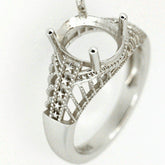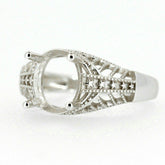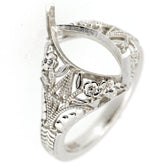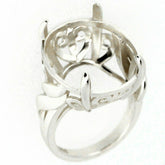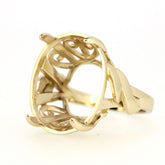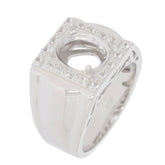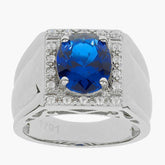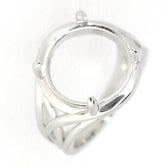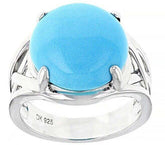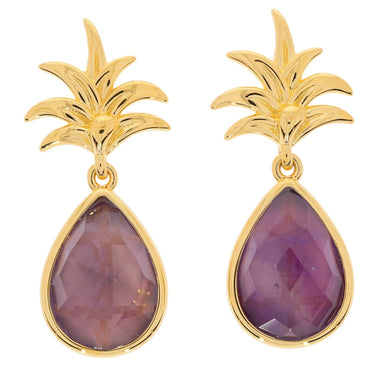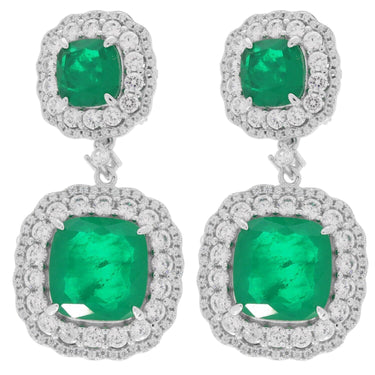Art Deco Ring Settings: Key Features to Identify Authenticity Easily
Art deco ring settings are treasured for their bold geometry and intricate craftsmanship, but how can you be sure you’re looking at an authentic vintage piece rather than a reproduction? Identifying genuine Art Deco ring settings requires understanding specific design traits, materials, and hallmark clues unique to the 1920s and 1930s era. This guide is crafted to help enthusiasts and collectors quickly spot key features that distinguish authentic Art Deco rings from imitations, including those subtle details found even in art deco ring settings without stones. Let’s dive deeper to sharpen your eye and confidence when evaluating these historic treasures.
Understanding the Essence of Art Deco Ring Settings
What Defines Art Deco Ring Settings?
Art deco ring settings emerged during the period roughly spanning 1920 to 1935, characterized by a unique blend of geometric precision and decorative flair. Unlike other vintage styles, they feature sharp lines, bold symmetry, and a strong emphasis on architectural shapes such as rectangles, triangles, and circles. These settings are designed not just to hold stones but to present them as part of a structured, artistic composition. Platinum and white gold were commonly used metals, prized for their durability which allowed intricate detailing like filigree and milgrain.
The Role of Design in Authenticity
The design of authentic art deco ring settings reflects an era that celebrated modernity and craftsmanship alongside aesthetic innovation. Details such as bezel settings, millegrain edges (tiny bead-like decorations), and carefully arranged calibré-cut stones are giveaways of genuine Art Deco origin. The settings often seem architectural, showing strong lines and a deliberate balance. These elements are more than decoration; they represent the technological advancements and artistic trends of the early 20th century.
Key Characteristics That Signal Authentic Art Deco Ring Settings
Materials and Metalwork
Platinum was the preferred metal due to its strength and ability to support delicate, precise designs. White gold occasionally appears, especially in rings from the early 1930s when economic factors influenced material choices. Authentic Art Deco rings usually exhibit a subtle patina, especially on platinum, which develops a distinctive soft sheen over decades. Modern replicas often lack this aged luster and can feel lighter or inconsistently weighted compared to vintage pieces.
Intricate Detailing: Filigree and Milgrain
- Filigree: Delicate, lace-like metalwork consisting of tiny intertwined threads is a hallmark of skilled craftsmanship, prevalent in authentic rings.
- Milgrain: Small, bead-like edges around settings and bands add texture and frame stones beautifully; its quality in genuine pieces is precise and even.
- Bezel settings: Encasing gemstones in a smooth metal rim often gave Art Deco rings a bold, modern edge.
When these details feel crisp and refined, they strongly indicate authenticity. In contrast, reproduction filigree tends to appear flat or too uniform due to machine production.
How to Identify Art Deco Engagement Ring Settings
Coupling Design and Functionality
Art deco engagement ring settings often present a central stone with geometric side stones such as baguettes or trapezoids. These settings focus on symmetry and balance with strong horizontal and vertical lines supporting the stones. The craftsmanship aims to emphasize the stone's size and brilliance without excessive metal work obscuring it, distinguishing it from other vintage styles that favor softer or more ornate curvatures.
Recognizing Period Gem Cuts in Settings
The stones commonly featured in authentic art deco engagement ring settings include Old European cuts, Asscher cuts, and emerald cuts. These cuts have broader facets and less brilliance compared to modern brilliant cuts, designed to sparkle under candlelight. When the setting tightly integrates these older cuts with geometric metal frames and milgrain accents, it strongly supports the piece’s authenticity.
Spotting Art Deco Ring Settings Without Stones
Why Empty Settings Matter
Many collectors seek art deco ring settings without stones, either for restoration projects or customized creations. Authentic empty settings can reveal even more about the ring’s vintage roots, as the metalwork and hallmark details are fully visible without distraction.
What to Look for in Stone-less Settings
- Precision in stone mounts and prongs showing handmade finishing.
- Sharp, geometric outlines where stones were originally set, with clean bezels or prong shapes typical of the era.
- Visible hallmarks or maker’s marks inside the band, often faint but indicative of provenance.
Careful observation of these features helps verify authenticity, especially when combined with professional appraisal or magnification inspection.
Hallmarks and Maker’s Marks: Crucial Clues in Identifying Authenticity
Common Hallmarks on Art Deco Rings
Authentic Art Deco ring settings usually carry hallmark stamps indicating metal purity—such as “PLAT,” “950,” “18K,” or numerical codes like “750” for gold. These stamps are often accompanied by maker’s marks—unique symbols or initials that identify the jeweler responsible. European origins may include country-specific marks (e.g., a French eagle head for gold).
Red Flags to Watch Out For
- Hallmarks that look modern, deeply stamped, or inconsistent with known historical marks.
- Missing or worn hallmarks can prompt caution, but absence alone is not proof of inauthenticity.
- Signs of re-stamping or altered marks that may indicate tampering.
Consulting hallmark databases or a knowledgeable jeweler can clarify doubts and confirm origin.
The Importance of Provenance and Authentication
Tracing Ownership and Documentation
Provenance offers valuable context when verifying an Art Deco ring’s authenticity. Documentation such as estate papers, receipts, or auction catalogs can greatly increase confidence in a piece’s vintage status and value.
Professional Appraisals and Authentication Services
Beyond visual inspection, gemological testing and expert appraisal can confirm metal content, gemstone characteristics, and era consistency. Techniques like X-ray fluorescence (XRF) and UV light examination are used for deep analysis without damage.
Where to Explore Authentic Art Deco Ring Settings
If you are eager to explore authentic options or discover more about art deco ring settings, viewing curated collections helps hone your appreciation for true vintage craftsmanship. For instance, the Art Deco Ring Settings collection offers a rich selection that showcases genuine period features and exceptional quality. As you browse, apply the identifying criteria discussed to recognize authenticity with greater ease.
In summary, authentic art deco ring settings stand out by their sharp geometric designs, skilled metalwork including filigree and milgrain, use of platinum or white gold, and hallmark stamps that tell a story of origin. Whether examining a complete engagement ring or art deco ring settings without stones, attention to these key characteristics empowers you to distinguish a true vintage piece from modern reproductions. For those passionate about vintage jewelry or searching for a meaningful heirloom, learning these features helps protect your investment in timeless elegance.
Ready to discover authentic selections and deepen your understanding? Explore the exclusive art deco ring settings collection today and find a piece that speaks to both history and style.

